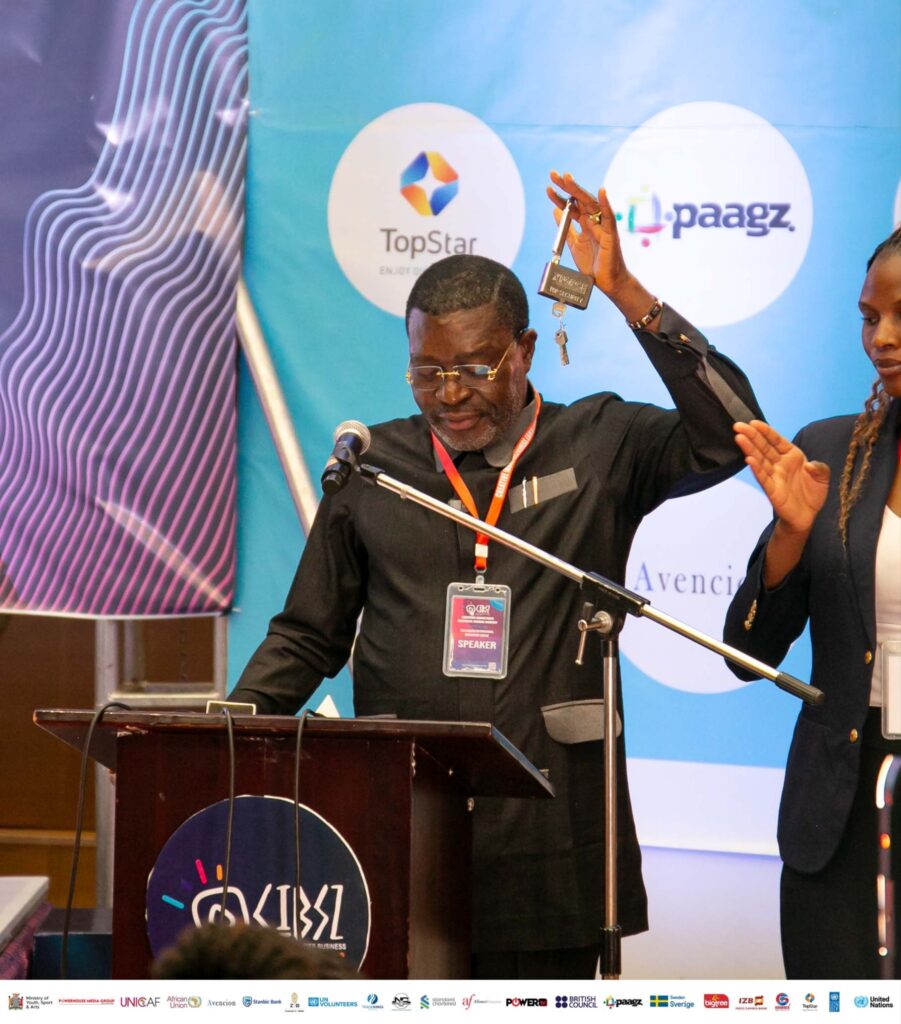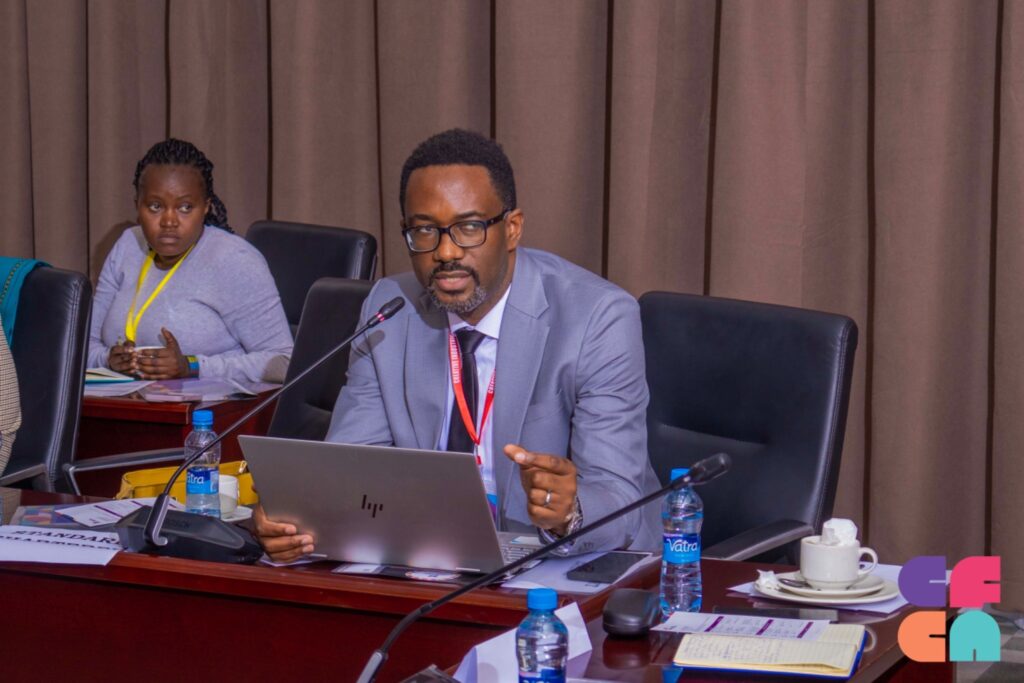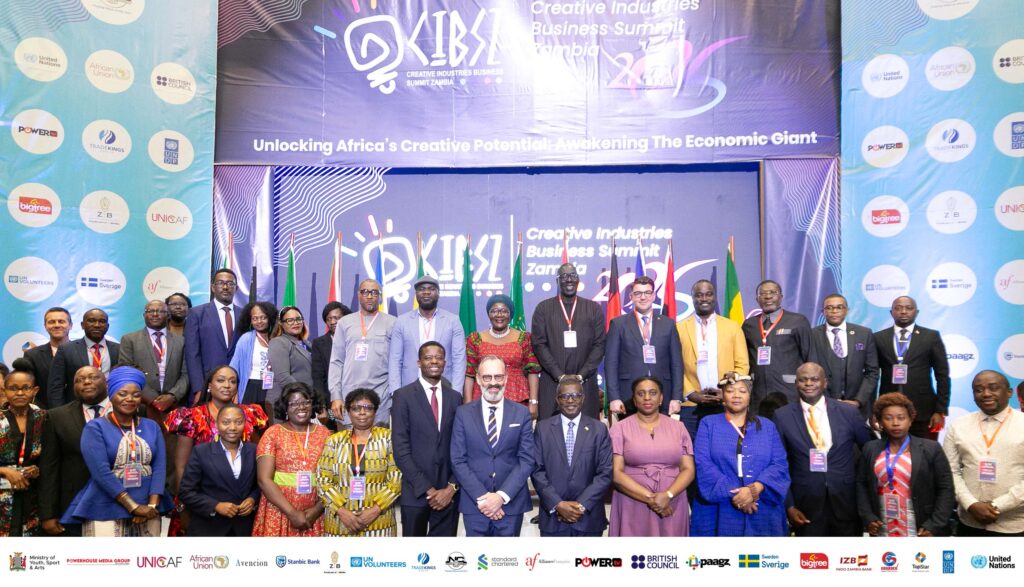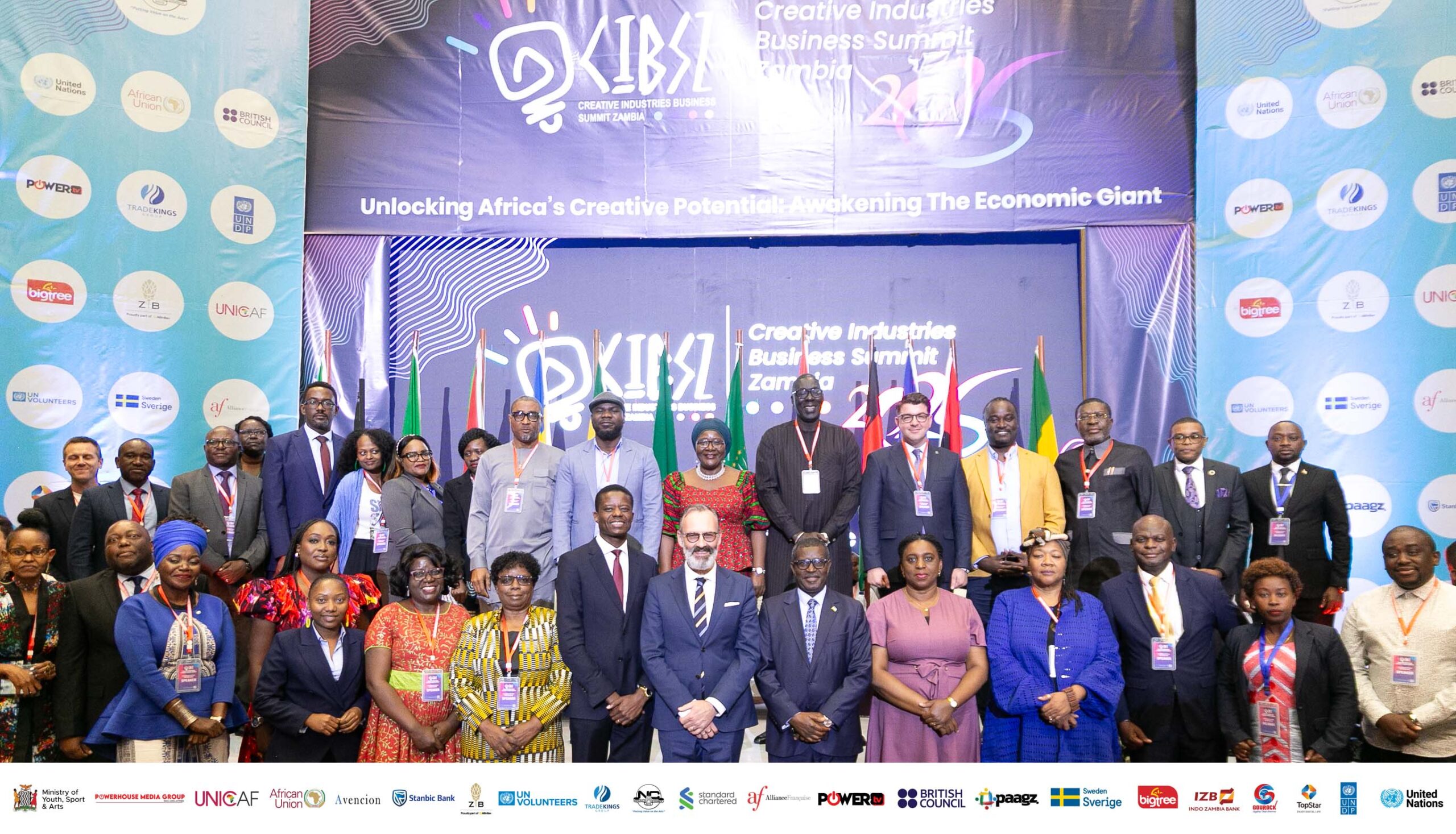
Mr. Kanayo O. Kanayo (Anayo Modestus Onyekwere), Nollywood Sensation and Lawyer, metaphorically unlocking a padlock during his speech to symbolize what is needed. “One cannot manage what they cannot measure,” he said, stressing the urgency of data, asset mapping, and enforceable IP frameworks.
From National Conversation to Regional Momentum: Unleashing Africa’s Creative Economy Through the 1% Campaign

The Creative Industry Business Summit (CIBS), held from June 25–27, 2025 in Lusaka, marked a powerful turning point for cultural advocacy in Africa. What began as a national dialogue in Zambia has now matured into a regional platform for action—bringing together thousands of participants, from policymakers and artists to private sector leaders and development partners under the theme “UNLOCKING AFRICA’S CREATIVE POTENTIAL”.
For Connect for Culture Africa (CfCA), this summit was more than just another conference. It was a strategic moment to reaffirm a bold, unifying message:
Africa must allocate at least 1% of national budgets to the Culture, Arts, and Heritage sectors by 2030.
This is not simply an aspiration—it’s a demand backed by research, consensus, and urgency.
The Economic Case for Culture

In a keynote address that reverberated across the summit, Mr. Shebo Nalishebo of the African Development Bank framed the creative sector as an “economic giant hiding in plain sight.” He noted:
“Globally, the creative economy generates over $2.3 trillion annually, contributing 3.1% of global GDP. In Africa, the sector contributes over $50 billion to GDP and supports around 5 million jobs, with these numbers understating the true size of a largely informal sector”
He challenged governments to formalize the sector, harmonize fragmented policies, and recognize creatives not just as artists but as entrepreneurs and educators. His four-part framing—why creativity matters, what’s holding it back, who must act, and what success looks like—formed a thematic backbone to the summit.
A Cross-Sectoral Push: “Where Are the Business Proposals?”

Mr. Sonny Zulu, CEO of Standard Chartered Zambia, challenged creatives:
“Investors pay for value. Branding is your first product.”
He called on practitioners to register enterprises, pitch scalable models, and adopt tools like NFTs and digital distribution platforms to maximize return on talent.
Sector Voices: From the Ground Up

Summit panels featured a vibrant mix of reflections—from legal and policy reform to cross-border collaboration, IP protection, and digital platforms. While CfCA did not lead these panels, participation as discussants echoed its agenda: the need for public financing, formalization, protection of copyrights and ecosystem-wide investment.
The CfCA Agenda: From Policy to Public Investment
Within the summit framework, CfCA hosted a closed-door high-level session, bringing together ministries and key stakeholders from across the region. The focus was two-fold:
-To facilitate experience-sharing through practical case studies, promote enhanced regional dialogue, and identify strategic pathways for increased public investment in the cultural and creative industries.
-To rally support for the 1% agenda—framing it as both a benchmark and a pathway to transforming Africa’s cultural and creative industries (CCIs).

In this intimate session, government representatives reflected on the gaps and opportunities in their national systems. Notably, Zambia, Uganda and Zimbabwe, three of CfCA focus countries, shared how strategic actions to CCIs have been registered over time—small steps, but evidence of progress. Namibia, Malawi, and The Gambia brought in a comparative aspect to the discussions, highlighting a pressing need to join forces as a region and jointly activate the African Union directive.
“The 1% campaign is not just about budgets; it’s about political will, sectoral coordination, and long-term systems change,” said Beatrice Waruinge, Selam’s Program Officer for CfCA.
From a regional perspective, CfCA’s advocacy emphasizes multi-sectoral engagement, with civil society, creatives, finance ministries, and development partners all playing strategic roles.
The Government Speaks: From Talk to Tangible Action
Delivering a strong endorsement for the sector, Hon. Rodney Sikumba, Zambia’s Minister of Tourism, applauded Zambia’s resilience; the ministry contributed 4% of GDP, even amid 2024 drought-related challenges.
His remarks served as a rallying cry:
“It is time to move from discussion to meaningful action—embedding arts and culture into education systems, securing permanent policy recognition, and dismantling siloed governance that has limited the sector’s reach.”
He further urged delegates to “monetize Africa’s rich cultural heritage for tourism, economic diversification, and youth employment,” encouraging all present to “copy shamelessly” from successful models across the continent. He called for sustained dialogue beyond the summit as a pathway to building momentum.
Conclusion: Unlocking the Future
If there is one takeaway from Lusaka, it is that Africa’s creative sector is ready — ready to lead, ready to scale, and ready to transform.
“Africa’s next boom will not come from beneath the soil, but from the brilliance of its people,” Nalishebo reminded the crowd.
CfCA remains committed to ensuring that brilliance is funded, protected, and fully unleashed. The seemingly ambitious 1% is not a ceiling — it is a starting point.
Let’s invest in the future of Africa, Let’s invest in culture.

